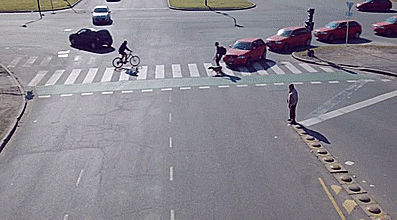Sometimes video games get a bad rap. As a form of media, they’re often considered unserious, or childish, or any number of other negative descriptors implying that time spent on a video game is time better spent elsewhere. There is a stigma applied to games that is somehow more pointed and dismissive than the hesitations we have around other forms of entertainment.
But what this stigma fails to acknowledge is that we are immersed in game design principles from the moment we wake up to the moment we go back to sleep, possibly after checking a health tracking app and logging a personal record. If you don’t consider yourself a gamer, but are generally a participant in reality, you might be more involved in gaming than you think. The MDA (mechanics, dynamics, aesthetics) framework for game design provides a nice, erm, framework for this discussion.
Mechanics
MDA defines mechanics as the components of a game, at the level of data representation and algorithms.[1] Applied to life, we can think of mechanics as the rules that dictate the realities around us. Natural laws are certainly at play for this category – gravity is a non-negotiable “rule” of reality that you and I follow every day by not floating off into the atmosphere.
Human-made rules provide a neater comparison. Credit card loyalty programs are examples of the reward structures people build in real life to encourage the behaviors we want to see in each other. These structures exist within larger economic structures with even more significant metrics like credit scores, net asset values, interest rates, and so forth, which in turn exist within even larger socio-political and cultural systems, all of which are collections of mechanics that proscribe specific human behaviors.
Dynamics
Dynamics are defined as the run-time behavior of mechanics acting on player inputs and each others’ outputs over time,[1] and this is where things get interesting. Extending my previous examples, we would observe dynamics when we throw a ball into the air and watch it fall, or when we see our credit scores change based on the spending decisions we make – the actions (throwing/spending) in these scenarios represent our inputs.

![]()
Traffic engineering provides a rich metaphor for game dynamics. Intersections have a variety of known possible mechanics (4-way stops, 2-way stops, stoplights, stop signs, roundabouts, etc.), all of which create dramatically different dynamics for operators who have no ability to coordinate their behaviors directly. Awareness of the underlying mechanics of an intersection is absolutely crucial to a driver’s ability to successfully navigate that intersection, and the fact that most commutes are not an exercise in chaos and carnage reflects our shared understanding of these dynamics.
Aesthetics
One might imagine that aesthetics are simply the visual representations of the mechanics and dynamics of a game system, but MDA defines aesthetics more broadly as the emotional responses evoked in the player during interaction with a system.[1] The taxonomy of aesthetics can include things like discovery, competition, self-expression, challenge, and a huge amount of other values as various as the spectrum of human emotion itself. These aesthetics are created and driven by dynamics.
Let’s contrast the aesthetics of a final presidential debate with the aesthetics of a presidential inauguration. In the final presidential debate, there are two participants (maybe three) from opposing sides in direct competition with one another, and a massive audience observes and rates their performances. These mechanics and their dynamics create aesthetics of tension, competition, passion, and conflict. By contrast, an inauguration includes one triumphant president-elect and an army of constituents, to whom the president-elect must address a speech that synthesizes the campaign. Aesthetics of unity, celebration, triumph, inspiration, hope, and closure are generated by these mechanics.
It’s All Connected
So now we’ve seen how aesthetics are created by dynamics, and how dynamics are created by the way that people interact with mechanics, with the cumulative effect of these interactions creating a game system. But why does this make you a gamer? Because at their heart, game mechanics are human mechanics, made by people trying to create an experience through a game-based metaphor for real-life systems. There are varying levels of abstraction and fidelity in these metaphors, but generally speaking the way we design our lives is the way we design our games, and vice versa. So next time you count your calories, check your bank account, pay a bill, or stop at a stoplight, you can safely throw a few more points on the board and think to yourself, “Well played.”
1. http://www.cs.northwestern.edu/~hunicke/MDA.pdf